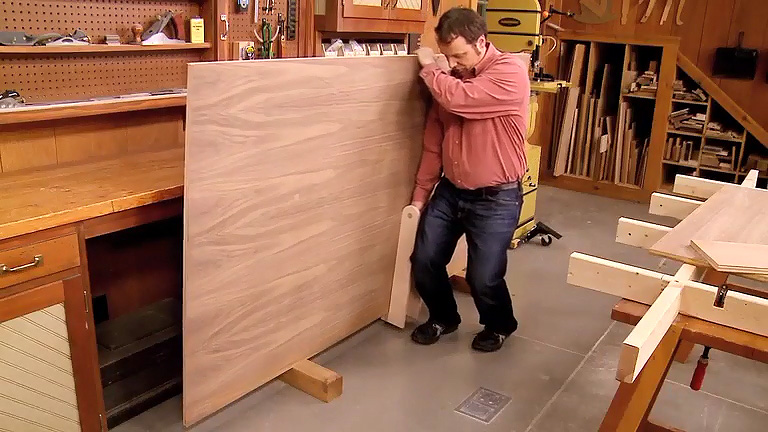One of the most basic tools every shop needs is a simple sanding block. I’ve used everything from a piece of scrap to a manufactured block to get the job done. But none of them ever really had the features I needed, so I built this one. This sanding block provides a good secure grip and still fits comfortably in my hand. Plus, the size and shape provide good visibility of the surface being sanded and allow me to get into even the tightest corners with ease. This block lets you use either standard or adhesive-backed sandpaper.

Building the sanding block is a snap. All you’ll need are two pieces of pine — one 1⁄2"-thick piece for the base and a second 2"-thick piece to form the handle. Then you’ll need to clamp the blocks together and trace the pattern on to them.

I made a trip to the band saw to cut the inside curve for the handle. Then it was a simple matter to glue the two pieces together. Now you can use the band saw again to cut the outside shape of the top of the block. Finally, sand the top and bottom to provide a smooth look and feel.

To keep the sandpaper tightly stretched over the block, you’ll need to secure the sandpaper in place at the front. For this, all you need to do is cut a shallow dado to hold the clamping pad across the front of the block. I did this by making two shallow cuts at the band saw to define the edges and then cleaning out the waste with a sharp chisel.
Since one of the goals of this project was to be able to sand into a corner without my fingers getting in the way, I beveled the sides of the block. This was easy. I just used a small piece of scrap to raise one edge of the sanding block to the desired bevel angle and then cut both sides with a couple of quick passes of the band saw.

You need to install a threaded insert to hold a clamping pad and knob in place.
Next make the clamp pad slightly smaller than the dado.To provide some “grip” so the sandpaper wouldn’t slip around during use, I added a small piece of sandpaper along the lower edge of the clamping pad.
A slot at the back of the sanding block holds the sandpaper in place. This is done by simply cutting a small slot at the back of the block. You’ll find a hand saw works great for this.
I glued a cork base to the bottom of my block. It helps keep the sandpaper from slipping around as you sand.











